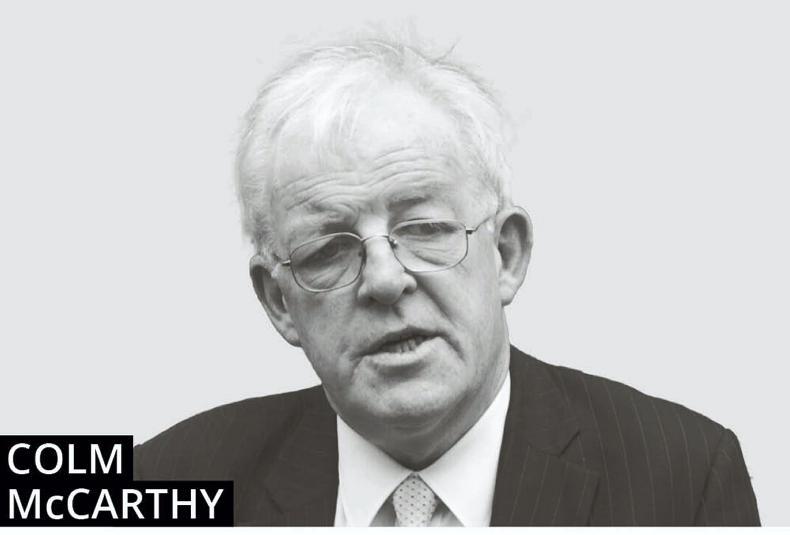The recent study on the Irish rail system by the engineers Ove Arup is focused heavily on prospects for shifting freight from road to rail.
Since everyone gets stuck behind a truck occasionally, the prospect of getting trucks out of the way is alluring.
Both the Green Party leader Eamon Ryan and Taoiseach Leo Varadkar have made encouraging comments about increasing the rail share to 10% of internal freight movements.
The Government is formally committed to increased rail investment and the consultants are optimistic too about higher passenger volumes as well as extra freight.
The political ambitions for a 10% freight increase are too modest, according to Sadhbh O’Neill of Friends of the Earth, who wrote in The Irish Times last week that "two-thirds of the island’s freight could be served by rail, which in turn would remove thousands of polluting heavy goods vehicles from our roads and urban areas".
Rail freight share
According to Eurostat figures, no country in Europe, even those with extensive coal and iron-ore shipments, has a rail freight share this high, and small island nations typically have a rail freight share at zero or in the low single digits.
No firm estimate of the current share of rail freight is available for Ireland, but it has been in long-term decline and appears to be well below 1%.
Even in the UK, the share has been under pressure with the collapse of coal-fired power generation and it will be a struggle to hold it around the 10% level.
According to the Central Statistics Office, internal freight movements in 2022 were 12.38 billion tonne-kilometres, almost all carried on trucks.
Irish Rail has discontinued the publication of the figure for rail, but it appears to be very low, of the order of one-quarter of one per cent. According to the audited accounts, annual turnover of Irish Rail’s freight business has been around €4m in recent years, roughly the turnover of a large and popular pub.
It is tempting to imagine great potential to expand
For any business which has such a low level of activity, it is tempting to imagine great potential to expand. But nobody thinks this way about the banana business in Donegal or beach holidays in Siberia.
There are solid reasons why rail freight is uncompetitive in Ireland and why Government should be cautious about investing in expansion.
We have been here before. CIE persuaded Government to invest EU grant money in freight gantries at various locations around the country in the 1990s during an earlier burst of optimism. All have since been abandoned.
Northern Ireland Railways suspended rail freight operations entirely in 2012.
Geography
The problem is geography and the nature of goods traffic. Long-distance carriage of bulky commodities remains a viable business for rail carriers in many countries, but Ireland has neither long distances nor bulk commodities.
Some coastal European states, for example in the Baltics and on the Mediterranean, enjoy a transit trade including containerised traffic over longer distances to destinations in central Europe, although some of this traffic has recently been disrupted by the Russian invasion of Ukraine.
Ireland has hardly any mining activity and the sole surviving mine at Navan, which shipped by rail through nearby Dublin, is closed, perhaps temporarily.
The only coal-fired power station, opened in 1985 at Moneypoint in Co Clare, imports directly and is scheduled to close in the next few years.
The largest port volume is at Dublin and is mainly containerised, much of it roll-on, roll-off and accompanied by drivers on the short sea crossings. Dublin Port company, by far the biggest in the Republic with around 80% of total seaborne traffic, reckons that most of the containers it handles have origins or destinations in the province of Leinster - that is, within an hour or a little more via the Port Tunnel.
Facilitation
The tunnel has facilitated the removal of the heaviest tricks entirely from the city streets – anything with more than four axles is banned. Shippers are understandably reluctant to put containers, already on trailers, on to trains to be met by trucks anyhow at the end of such short journeys.
Total transit time and extra handling costs are an insurmountable obstacle to rail freight in Ireland. There is already capacity to handle more volume without any investment at all, as evidenced by the revenue decline, but no takers.
The situation regarding rail passenger traffic, about which minister Ryan is also bullish, is not clear cut either.
Bus-based public transport also enjoys built-in cost advantages over rail in a low-density country with sprawling cities. Most public transport passengers in Ireland, even in Dublin, travel by bus.
The ambitious plans for rail investment have been welcomed by Irish Rail, but need to be independently evaluated by the Department of Public Expenditure before spending is committed. This is required by the Public Spending Code.






 This is a subscriber-only article
This is a subscriber-only article










SHARING OPTIONS: